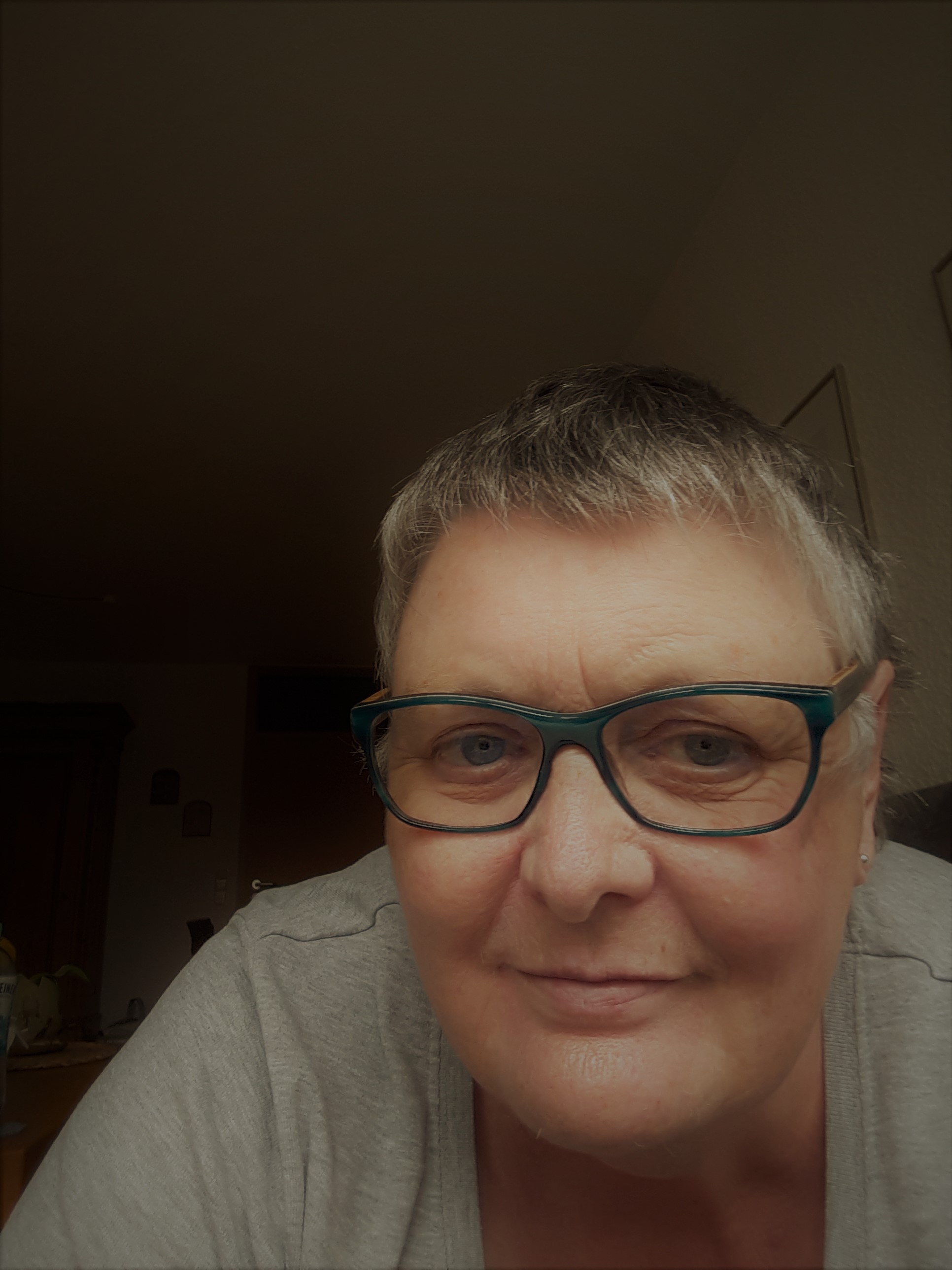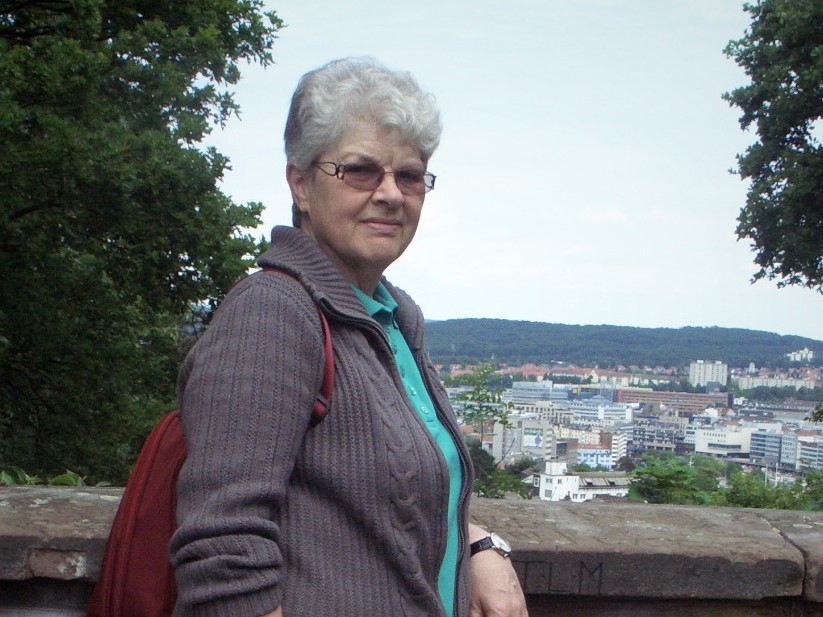Interview with Saarland Citizen Scholars
Homburg and Saarbrücken, Saarland, June 21, 2021
• Homburg and Saarbrücken, Saarland, June 22, 2021 •
The German Heritage in Letters project depends on the assistance of citizen scholars, particularly the family historians who share the materials they’ve preserved with us and the transcribers who use our online interface to transcribe letters into machine-readable text. (If you want to get involved and help transcribe letters, learn how to get started here.) Some of our transcribers work alone, but today we'd like to share an interview with a group of four remarkable volunteers in Saarland who, working together, have fully transcribed the collection of Charlotte Fischer von Höfeln’s letters. Charlotte Fischer, who was orginally born in Nuremberg, immigrated to Illinois around 1851 and eventually married Andreas von Höfeln, an immigrant from Norden, Hannover. Their family papers were eventually donated to the Newberry Library, in Chicago. The Saarland group started working on the extensive collection, which encompasses fifty letters, in November 2020 and finished in March 2021. Thanks to their research, we now know the names and identities of Charlotte’s correspondents, including her sister Babette Tritschler, her cousin Auguste Finckh, and other relatives and friends in Germany, who wrote to her from Kirchheim unter Teck (Württemberg) and other communities nearby. We asked our volunteers a set of questions about how they learned Kurrentschrift, their work process, and the insights they gained from reading through the Hofeln letters. Before we share their answers, we introduce them individually below.
Interview and translation by Yella Nicklaus (auf Deutsch).
Regina Kunz lives in Homburg (Saarland) and worked as a programmer before her retirement. When she found old letters written in Kurrentschrift in her parents’ estate, she was prompted to learn the cursive and became interested more broadly in the transcription of historical letters. Bruno von Lutz, the director of the German-American Institute of Saarland, connected her to Maria Sturm, one of the organizers of the Horner Library’s Transcription Tuesdays. She has been a regular participant of the transcription event since autumn 2020. |
|
Eva Tietjen lives in Saarbrücken, where she worked as the head of a judicial authority’s cash department. Because both her grandparents and her father wrote in Kurrentschrift, she learned to read the cursive at a young age. When she later conducted ancestry research, she needed to use it again. Seven years ago, she became interested in the transcription of historical letters. Since January of 2021, she has participated regularly in the Horner Library’s Transcription Tuesday meetings alongside Regina. |
 |
Hans-Hermann Marx is also a resident of Saarbrücken. Before he retired, he worked as a commercial clerk in accounting and controlling. He became motivated to learn Kurrentschrift while researching his own family history and encountering documents he could not read. Learning Kurrentschrift ten years ago was the start of a deeper study of historical forms of writing as well as contemporary history. |
|
Monika Gelf also lives in Saarbrücken. She was a commercial clerk in an automobile firm’s accounting department before retirement. Through research into her family history, she came across documents that were written in Kurrentschrift, which prompted her to learn how to read it. Eight years ago she became interested in transcribing historical letters. |
 |
1. How did the transcription group emerge?
We all participated in a course to learn Kurrentschrift – from there, interest groups and friendships formed, which eventually lead to the establishment of our writing group.
2. How do you organize the transcription process? Do you use the online interface or work separately?
Each participant of our group transcribes a letter independently and enters the text into a Microsoft Word document. This is followed by a round of editing and corrections. By the time a letter is transferred back into the online transcription interface, usually all four transcribers have worked on the document. If a letter poses a particular challenge, we discuss it as a group – at the moment via Skype; before the pandemic we met in person.
3. Did you gather something from transcribing and reading through the Höfeln letters which you found particularly interesting?
Not something from a specific letter, but rather an overall impression that developed during the transcription process – particularly about Babette Tritschler, Charlotte’s elder sister (by eleven years). The style of her letters is remarkable: she has a very original and peculiar orthography and writes with only a few punctuation marks, which often made it hard to grasp the structure of her letters. She herself often described problems with her eyes, and it’s possible today she might be diagnosed as suffering from a cataract. As a result of these issues her writing is sometimes difficult to read.
4. Why is it worthwhile to study these letters from the 19th century today?
The letters give an interesting glimpse into their time, from the 1850s through 1890, mostly about Germany rather than America. Babette Tritschler became a widow and the single mother of a daughter at a very young age. She probably spent her entire life in need of money, yet she was able to establish a certain level of autonomy and independence. Through her strong faith, she found a lot of strength to accept blows of fate, which might sometimes seem rather naïve from our modern perspective. Much of the letters’ content seem to be a reflection of the time, also with regard to political, technical-industrial and social developments and the state of medicine. Babette Tritschler wrote about the first railroad connections and the progress of industrialization, but also about people’s helplessness and vulnerability with regards to diseases and their treatment. The letters also show that people never stopped longing for their emigrated relatives, even after decades of not having seen each other.
Thank you to this group of citizen scholars for sharing their perspectives with us! In a future news post we’ll share more about the detailed research two members of the group have conducted on their own.
 |
The transcription group working together, in person, before the coronavirus pandemic. Members now meet online over Skype. |

